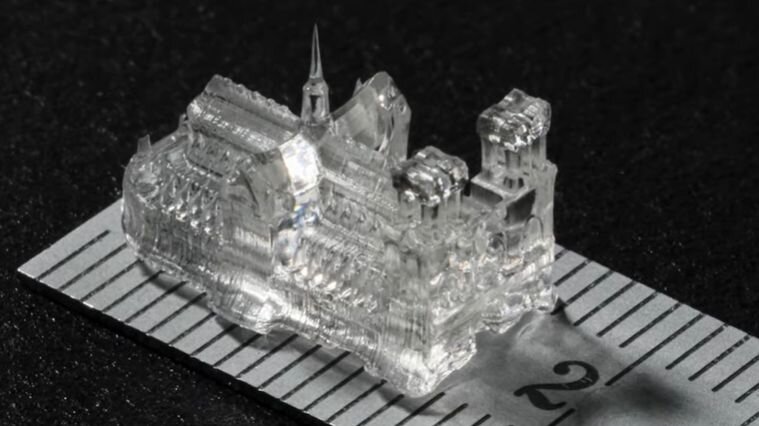
3D printing has incredible potential for both research and home uses, but it has some limitations. The current technology takes some time to produce an object, and it produces hard structures only. But now, researchers from the Swiss Federal Institute of Technology Lausanne (EPFL) have come up with a method for printing highly-precise miniature objects with different textures.
Not only can the process produce more elaborate and detailed soft objects, but it is also extremely quick, requiring less than 30 seconds to print an object from start to finish. It works by using a translucent liquid and setting it into shapes, which can form scaffold-like structures in which cells can develop. It has potential uses in the area of 3D bioprinting, for example for creating artificial arteries that could eventually be used to replace or repair damaged heart parts in humans.
“Conventional 3-D printing techniques, known as additive manufacturing, build parts layer by layer,” Damien Loterie, microengineering researcher and the CEO of Readily3D, the company the team set up to market their technique, explained in a statement. “The problem is that soft objects made that way quickly fall apart.”
To address the issue of stability, the team used the principles of tomography to harden the objects using light. When an object is printed, a laser is fired through the translucent gel to set it into a firmer form.
“It’s all about the light,” Paul Delrot, Readily3D’s CTO, said in the statement. “The laser hardens the liquid through a process of polymerization. Depending on what we’re building, we use algorithms to calculate exactly where we need to aim the beams, from what angles, and at what dose.”
At the moment, the printer can create structures of up to two centimeters in size, with a precision level of 80 micrometers — which is approximately the width of a human hair. The next stage of research is to develop a printer that can create larger objects of up to 15 centimeters in size. Additionally, the researchers are considering using the process to create silicone or acrylic parts which, unlike traditional 3D printed objects, don’t need to be finished off with sanding.
The research is published in the journal Nature Communications.



